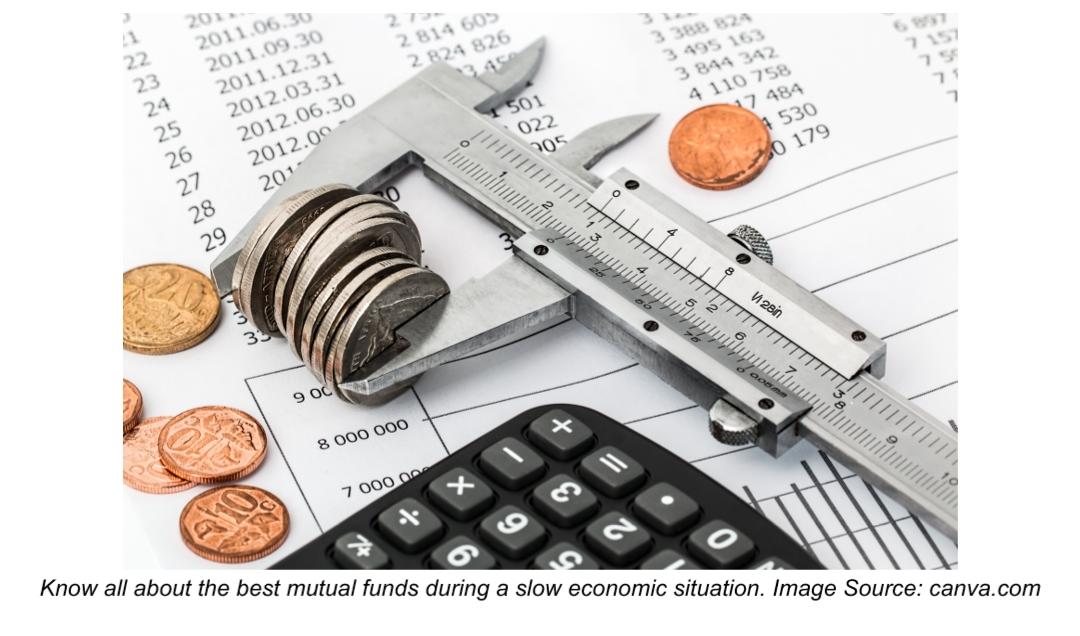Trending Now
- 830 voters names go missing in Kavundampalayam constituency
- If BJP comes to power we shall consider bringing back electoral bonds: Nirmala Sitaraman
- Monitoring at check posts between Kerala and TN intensified as bird flu gets virulent in Kerala
Business
5 best mutual fund categories to invest in when the economy is low
![]() April 16, 2020
April 16, 2020
TCP: ADVERTORIAL
A mutual is a type of open-ended investment product that pools funds from numerous investors to acquire securities. The investment goal of these funds collected is then to focus on using these assets to invest in a group of assets. These investors that are spending can be retail or institutional, and also, there are several types of mutual funds available in the market.
When the economic growth begins to slow down recession follows with news reports highlighting the descend in stock prices. The trepidation of further drop and scaling losses drive risk-averse investors to relinquish their planned investment strategies and focus on selling out their stock funds. During this plight, this tactic might be useful, however, there are many best mutual funds with proper investment opportunities during the economic recession. So, in the universe of all the best mutual funds, these smartly help to build a portfolio for such onerous economic times.
Strategic Approach during Slow Economy
During slow economic times, the prevailing wisdom is for investors to move away from equity funds and focus more on a fixed income. Instead of entirely exiting from stock funds and starting to invest in bond funds as the best mutual fund option, a smart practice would be to build a diversified portfolio. This would include a mix of bond funds as well as equity funds to weather any challenging economic downturn and avoid a massive hit in the holdings.
An accomplished strategic investing approach during a slowing economy is to continue manifesting in stocks, however, also to ruminate over buying into sectors like consumer staples, health and utilities, and even certain types of bond funds. Bond funds usually have a low ( even negative) correlation with the stock market. Thus, using them variegates the holdings in the stock portfolio. Furthermore, this ensures making the most of the rising stock prices but, at the same time, helps to avoid any significant declines of an incoming bear market by sidestepping the riskiest areas.
The best mutual funds to invest during a low economy would be the no-load funds having low expense ratios. This also contributes to the diversification in the portfolio, also successfully evading the investment sensitivity during such tough times.
Here are the five best mutual fund categories to consider buying when the economy is low. Read on for a better perspective on the best mutual funds in 2020 for the investors to outperform during such exacting market situations.
5 Mutual Fund Categories to Consider during Economic Slack
Before deep-diving into these mutual fund categories, let’s quickly understand the various stages of an economic cycle, which revolves around periods of multiple ups and downs. Indicators like sales and production, job hike, salary cut, unemployment are used to determine the economic condition of a place. These four phases include-
●The Early-Cycle Phase: This is when the economy and the markets are recuperating from a recession
●The Mid-Cycle Phase: This is when the economy is slowly moderating
●The Late-Cycle Phase: This is when the economy is escalating, and consequently the inflation and the stock prices are reaching to peak-high
●Recession: This is when the economy slacks down and stock prices descend, as estimated by Gross Domestic Product (GDP)
Henceforth, to invest during a slowing economy, given below are the 5 best mutual fund sectors that can help bypass the risk of avoiding too much financial loss.

Consumer Staples Select Sector SPDR (XLP)
For broad exposure to consumer non-discretionary stocks, investing in consumer staples, the select sector, also known as XLP is the best mutual fund option as a funding option. This non-diversified fund aims to provide investment results (before expenses) that usually correspond to the price and the yield performance in the Consumer Staples Select Sector for the communal traded equity bonds of companies. To track the proper functioning of the index, this fund engages a replication strategy. It usually invests at least 95% of its overall assets in the securities involving the index. The index comprises securities from industries like personal and household products, food and beverages, food and staples retailing, tobacco, and so on. Non-discretionary stock here implies that the consumers purchase everyday products and might not have a choice on the purchase. The shares in XLP include that of Coca-Cola and Procter and Gamble. The expense ratio for this XLP category is 0.13%
Healthcare Select Sector SPDR (XLV)
The Healthcare Select Sector SPDR (XLV) is the oldest and the largest fund in the mutual fund segment, and the trading volume of XLV dwarfs its competitors, thus making XLV’s liquidity unparalleled and one of the best mutual fund options. XLV aims to provide investment results (before expenses) that generally correspond to the price and the yield performance of the XLV index. This index provides a constructive rendition of the health care mutual fund of the S&P 500 index. Even during a slow economy, people do need to visit the doctor and buy medications, so this sector is relatively safely cocooned in times of maturing economy during the late-cycle phase. XLV is one of the best mutual funds for investors to take tactful positions at a targeted level over conventional approach based investing. It holds some of the high-quality US stocks such as United Health Group (UNH), and also, Johnson & Johnson. XLV’s expense ratio is 0.13%
Utilities Select Sector SPDR (XLU)
The Utilities sector XLU is another one of the best mutual fund categories with a substantial, inordinately bing liquid fund which only invests in utility companies that are encompassed in the S&P 500. XLU fund delves to present investment solutions (before expenses) that correspond to the rates and accrue performance of the XLU Index. The Index aims to yield an efficient representation of the utility sector of the S&P 500 Index. Being amongst the most economical liquid options available, it gives a definite exposure to companies such as gas, electric, and multi utilities along with energy trader and power producer industries. The expense ratio here is 0.13%
Municipal Bond Funds
Municipal bond funds are issued by the state and local government to provide a higher degree of security and safety to the investor, especially during slack in the economy. These are one of the best mutual fund options that are managed with varying objectives depending on credit quality, time duration, and location. This kind of mutual fund involves debt securities provided by a county, state, municipality to bank capital spends. They are cleared of federal and state taxes. In layman’s terms, the income issued within municipal bond funds is free of tax at the federal level. Additionally, in case the fund owns municipal bonds generated in the investor’s home state, even then, then this interest is free of tax at the state level
Taxable Corporate Funds
These are one of the best mutual funds to be taken into account as they offer higher yields over the funds backed by the government. Even though these can be riskier than funds generated by the government, and also cover interest rates in federal and state taxes, they bring the highest yield and are better than stock funds. Hence, these are the best mutual funds that can be considered a viable investment option during a slow economy or bear market.

























